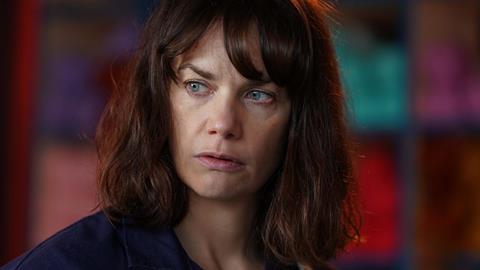The gripping BBC series may have added elements of gothic horror to the reality of life in Ireland’s Magdalene Laundries, but it tells a vital story that we must not forget, says David Greenwood

Let me get one thing straight. All the women who found themselves in Magdalene Laundries (otherwise known as Magdalene asylums or institutions) were innocent of any wrongdoing. They’d committed no crime. Most had simply fallen foul of a made up rule that meant unmarried mothers were shunned and treated differently to married mothers. Many were raped, abused or abandoned by families that were unable to take care of them. The Church was (and to some people still is) so powerful that its followers accepted this heart-breaking and cruel state of affairs without question.
The BBC drama The Woman in the Wall tells the story of Lorna, a young Irish girl who was placed in a Catholic-run Mother and Baby home after becoming pregnant, and whose child was forcibly removed from her. Thirty years later, the murder of a local priest finally begins to reveal the story of what happened to her daughter.
Her husband could not fathom how she could still believe in God after her ordeal
The series accurately depicts the practice of children being taken from unmarried mothers and handed (or sold) to adoption agencies, often with the child’s death faked in the process. Magdalene asylums were, unbelievably, widespread - not just in Ireland but throughout the UK, Europe and the Americas, in both the Catholic and Protestant Church, until as recently as the 1980s.
A history of abuse
Between 1922 and 1996, at least 10,000 girls and women were imprisoned, forced to carry out unpaid labour and subjected to severe maltreatment in Ireland’s Magdalene Institutions. Many carried the psychological scars for life.
Like Lorna, the women I have helped through Minister and Clergy Sexual Abuse Survivors (MACSAS) also objected to the removal of their children, but were powerless in the face of an army of nuns, priests and the acquiescence of their own families – all, in their own way, enforcing this hideous doctrine.
During the last 20 years, thanks to the hard work of activists and researchers, some mothers have been reunited with their stolen children. An inquiry has taken place and a compensation scheme was set up in Ireland. The unmarked graves of many babies have been discovered. But compensation can only be a small crumb of comfort to the women and children whose lives could have been so different.
Shamed and rejected
While The Woman in the Wall is dramatic in its depiction of the plight of Lorna, there are many elements of true stories within it. Among the women I’ve spoken to, shame, rejection by their communities and mental health struggles are common. The reality of life in the laundries was the relentless drudgery of long, hard working hours and little education. Upon release, a future of menial jobs and more guilt from the Church and society.
One woman I worked for, Philomena, was removed from her family simply because her parents couldn’t cope with all their children. At the time, contraception was discouraged in Ireland. Philomena was not pregnant and had done nothing wrong, yet she was placed in a laundry. She tried to escape twice, each time being returned by the local police. When she was finally allowed to leave, aged 24, she felt so much shame that she left Ireland and started a new life in England, working as a housemaid. She told me that her work in the laundry was hard. She worked long hours and her skin suffered. The clothes she was given were rough.
The women were powerless in the face of an army of nuns, priests and the acquiescence of their own families
Despite the hell she endured, Philomena kept a religious shrine in her front room, including a picture of Jesus and the Virgin Mary, a cross and her rosary beads. She kept memorabilia from religious pilgrimages she’d made. She prayed each night and was a keen churchgoer, never losing her faith. She was a kind and forgiving soul. Her husband could not fathom how she could still believe in God after her ordeal.
Other women I’ve helped still battle with the psychological fall out from their time in the laundries, the loss of their babies and the lingering shame and guilt. We must remember all the boys and girls placed in such institutions by the Church, wherever they were in the world.
I just hope The Woman in the Wall can serve as a reminder of how not to do religion.
If you have been affected by minister or clergy abuse, whether as an adult or child, help and resources are available at MACSAS




































No comments yet